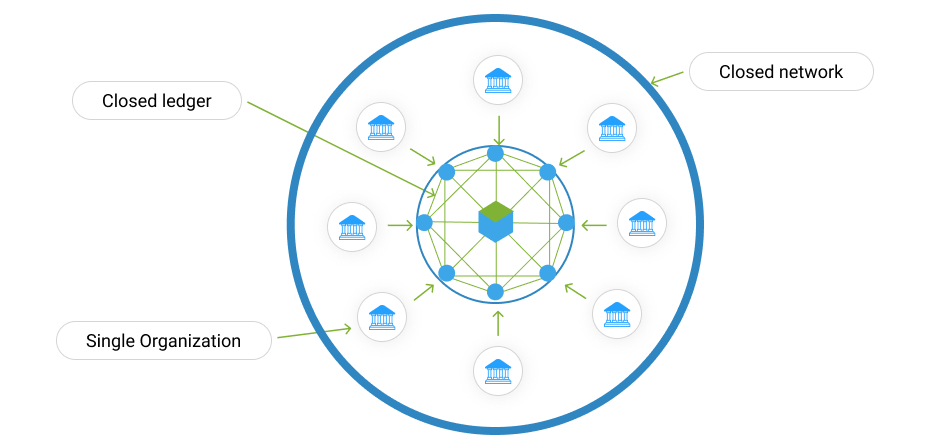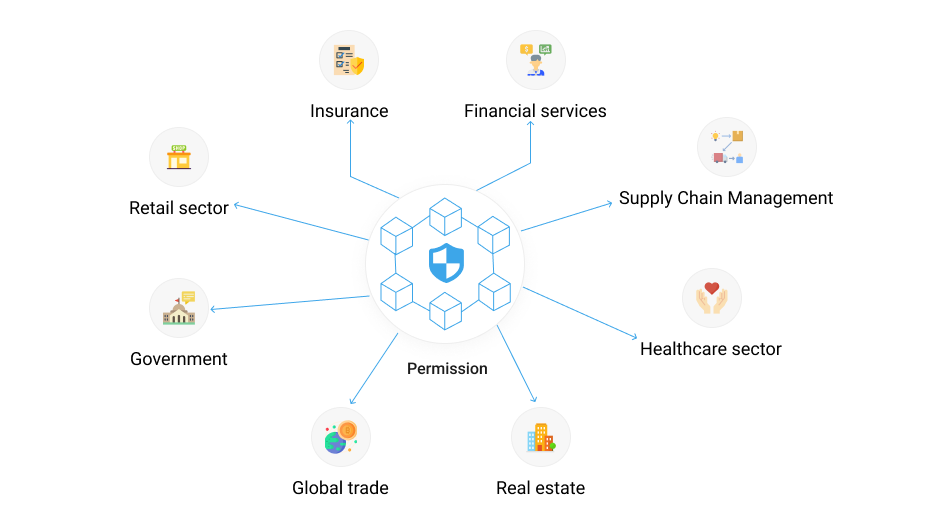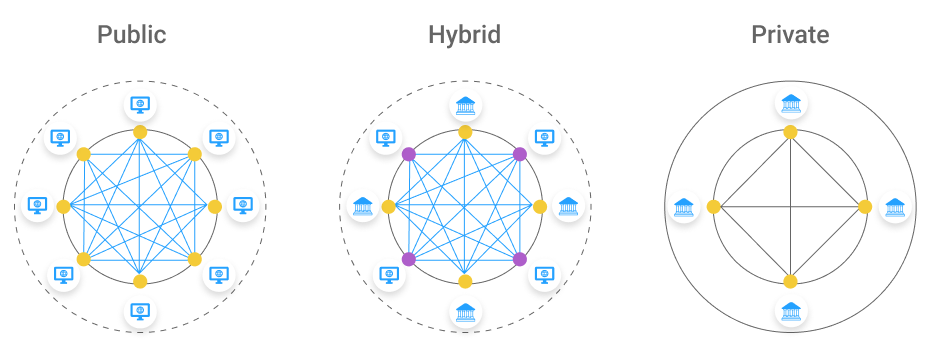Permissioned Blockchain Networks
Introduction
As per reports, the global blockchain technology market size in 2022 is expected to grow by 10.02 billion dollars, and 1,431.54 billion dollars by 2030. Following the outburst of the pandemic, every sector has or is planning to shift towards blockchain technology.
Blockchain networks can be broadly classified into two types:
- Public blockchain network/ Permissionless blockchain network
- Private blockchain network/ Permissioned blockchain network
- Hybrid blockchain network
Every industry is unique and different. So are their needs and requirements. It is clear that privately held companies cannot go for an entirely decentralized blockchain network. Therefore, these companies opt for permissioned blockchain networks. Similarly, some companies would opt for public blockchain networks as per their business model.

Permissioned blockchain networks are those networks where you need permission to be a part of the network. It is not open to unauthorized users. These kinds of blockchain networks are controlled and governed by top authorities. This authority looks after the operations and management of the network.
One needs to fulfill authority’s requirements, to be a part of a permissioned blockchain network. The permission system can also be called an access control layer, which contributes to the security of the blockchain network. A suspending regulator is responsible for granting and revoking permission to participants.
How Is Permission Granted By An Authority In A Permissioned Blockchain Network?
A coded key/ digital invitation is shared with the participant by the authority to grant access. The authority also supervises the activities of the participants in the blockchain network. Corporations and giant enterprises use permissioned blockchain networks. Some of the significant examples are Hyperledger, Quorum, Corda, among others.
Merits of Permissioned blockchain network
- Efficiency — The blockchain network is supervised by a central authority. This authority governs and maintains the relationship between nodes(participants). Thus, it makes sure that the system has the resources to operate. It speedily validates the transactions. Thus, results in improving the complete efficiency of the network.
- Security — As a permissioned blockchain network is governed by an authority, it negates any unauthorized access in the network.
- Cost-efficient — Since the working and management of the network are taken care of by authority, companies do not need to spend extra to set up rules and regulations.
- Scalability — Permissioned blockchains are governed by rules and regulations set by an authority that makes the network scalable and reliable.
Permissioned Blockchains As Forks of Public Blockchain
Permissioned blockchains are forks of Public blockchain. Data privacy and private transactions are features of a permissioned blockchain network. The primary goal was to use the existing technology as much as possible with the implementation of new changes.
Examples
Quorum: Popular permissioned blockchain network Quorum is a fork of the Ethereum blockchain network, which is a public blockchain network. The base of the Quorum blockchain network is the Go implementation of Ethereum.
BlockApps: BlockApps network is a fork of Ethereum where it provides benefits to enterprises like extensibility, standardization, etc.
Licensed private blockchain
The regulatory authority of a licensed blockchain network provides licenses to the users for participating in the blockchain ecosystem.
Examples
Hyperledger Fabric: It is an open-source permissioned blockchain network that offers unique identity management and control features perfect for various industrial applications.
Hedera: Hedera is a uniquely created blockchain network that is faster, efficient, and secure.
Use cases for permissioned blockchain

| Sector | Use cases |
|
|
|
|
|
|
|
|
|
|
|
|
|
|
|
|
Conclusion
Permissioned blockchain networks provide benefits in a closed ecosystem along with meeting the requirements of the companies. They come with challenges that can be easily taken care of with a team of experts. So, all you need is to get in touch with Nu10’s experienced professionals and share your ideas.
We are a DeFi and crypto consulting company that has experience working on various kinds of blockchain networks including Hyperledger, Cardano, Avalanche, and much more!
About Author
Mohit Kataria
Mohit, a career entrepreneur with 21+ years of experience, specializes in conceptualizing large scale analytics initiatives and driving them to success. He co-founded Manthan Research & Analytics, later acquired by M3 and rebranded as m360 Research. He excels in building and scaling high performance teams.









